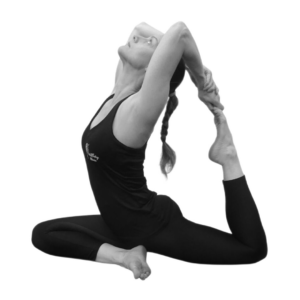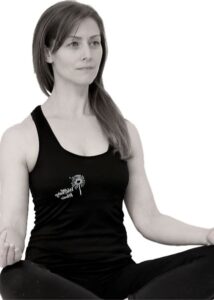
Somatic therapies have been around in the world of energy healing for an age. However, the term ‘somatic’ seems to be the new buzzword of the moment.
There’s a plethora of apps offering weight loss, emotional release, and trauma healing through somatic yoga. Therefore we need to understand why such claims are made, and that desired results are not based on blindly following, but on understanding the approach.

The term “somatic,” derived from the Ancient Greek word “sōmatikós” meaning “bodily” and “sôma” meaning “body,” is frequently used to refer to non-reproductive cells of the body.
In the context of body structure, “somatic” relates to features specific to the body’s wall, distinguishing it from the head, limbs, and internal organs.
Additionally, the term “somatic nervous system” describes a portion of our nervous system responsible for controlling our voluntary body movements.

Somatic psychotherapy encompasses a diverse range of therapeutic approaches that emphasise the interconnectedness of the mind and body.
Through specific techniques, somatic therapists guide individuals in releasing pent-up emotional trauma that has become embedded in their physical beings.

Any movement performed consciously to focus on the internal experience, physical and emotional can be considered as somatic.
Using all of these descriptions, we can build a complete holistic healing approach exploring the connection between physical pain and emotions. Understanding that thoughts and feelings can induce physical sensations in our bodies.
Your body truly is listening and within the world of yoga and energy healing, we acknowledge a profound understanding:
Our physical manifestations are inextricably intertwined with our thoughts and emotions.
We understand that the chakra energy system can become unbalanced through mental and physical stress resulting in a profound change to our physiology.
Through chakra work, mindfulness, meditation and certain movement techniques, we can release stored trauma, recognise destructive belief patterns, become aware of our habitual reactions, re-establish/ refine communication through our entire nervous system and heal mentally, emotionally and physically.

Somatic therapists employ various mind-body techniques to assist individuals in releasing harmful and pent-up emotions stored in their bodies. These techniques include acupressure, hypnosis, breathwork, and dance, among others.
Additionally, there are vital techniques that may not be as well-known:
Well, yoga (all styles and approaches) is to a degree, a form of somatics because ultimately we are seeking a full feeling of connectedness to ourselves and the universal consciousness. However, very often, we aren’t fully aware that our emotions are an important part of the seeking process.
In the Western world, we tend to give explicit attention to the poses breath and movement. Some seek this for discipline and control of their lives, some seek it as a means to escape their feelings, and some see it as a stress reliever or coping tool. Many only see it as physical exercise and some even seek it as a means to feel connected to others and enjoy the social aspects it brings.
None of the above are wrong, yoga is a beautiful tool that helps many people in many ways. Unfortunately, few see or understand its full potential for full interconnectedness or give much thought to the philosophy of yoga.
Somatic yoga is about really looking into who you are, seeing the shadow self, learning that you have control over how your body feels, how you process emotions, how you react to situations and learning to empower yourself with self-discovery.
What is the Feldenkrais method? A method that draws inspiration from the principles of physics, biomechanics, and empirically derived insights into learning and human development.
According to Moshe Feldenkrais, “We move following our perceived self-image.” This method aims to enhance awareness of one’s habits and tensions, thereby encouraging the development of alternative movement patterns.
Its method works on the process of helping the brain rediscover the muscle.
Here’s a great scenario to understand this.
You have chronic back ache but the doctors and physio tell you that physically you are in perfect health, there is no reason for you to feel this ache or pain, yet you do!
Feldenkrais works on the premise that the muscle or set of muscles in the location of the pain is in a constant state of spasm and fatigue, but that the brain has some level of amnesia to them.
The brain believes these muscles are relaxed so does not encourage further relaxation. Although stretching these muscles gives relief, the relief seems to be temporary.
His method works to (painlessly may I add) activate the offending muscle groups enough for the brain to receive the message that they are active before releasing the activation therefore encouraging the brain to help support the muscles to find maximum release and a naturally relaxed state of being.
With only a few applied sessions of this method, people have found permanent relief for long-term chronic problems
Somatic Yoga in popular culture.
While yoga apps can be beneficial, it is important to consider your motivations for trying them.
To get the most out of your practice, consider seeking guidance from a somatic therapist or instructor. They can provide you with a deeper understanding of the practice and help you tailor the app to your specific needs.
Trauma release can be a difficult process, sometimes we need a professional to help us understand what and why we are feeling and experiencing certain aspects of the healing journey.
Being aware that this can be a difficult process can help you be more forgiving of emotional responses that you may have whilst practising somatic yoga/ therapy.
Choosing a group classroom environment that feels safe to be vulnerable and express emotions is essential. So if your intuition tells you that the class isn’t right for you, trust in that feeling.
When selecting a somatic therapist, consider the following aspects:

Benefits of Somatic Yoga
Some Tips On How To Practice Somatic Yoga When You Are Alone
Body Mapping
Body mapping is a therapeutic transformative technique that can help us to illuminate the profound connection between our emotions and their tangible effects on physical mobility and overall well-being. It is often used during somatic practises as a window into the intricate dance between our inner emotional landscape and the physical manifestations.
Body mapping invites individuals to explore the relationship between their emotions and physical sensations through a mindful and introspective process. By attuning to the subtle vibrations of their bodies, they can begin to recognize patterns and associations between specific emotions and the corresponding physical responses they elicit. This awareness nurtures a deeper understanding of how emotional states can manifest as tension, pain, or discomfort in various parts of the body.
Like this article?

Personal, business and spiritual development coaching, yoga classes and private tuition, wellness consultancy.
Hello, I am Anna the creator of WellbeingWinnie – my dream that grows bigger and more exciting everyday, inspired because of an illness called myalgic encephalomyelitis (M.E) which I have had for 25 years.
Leave a comment